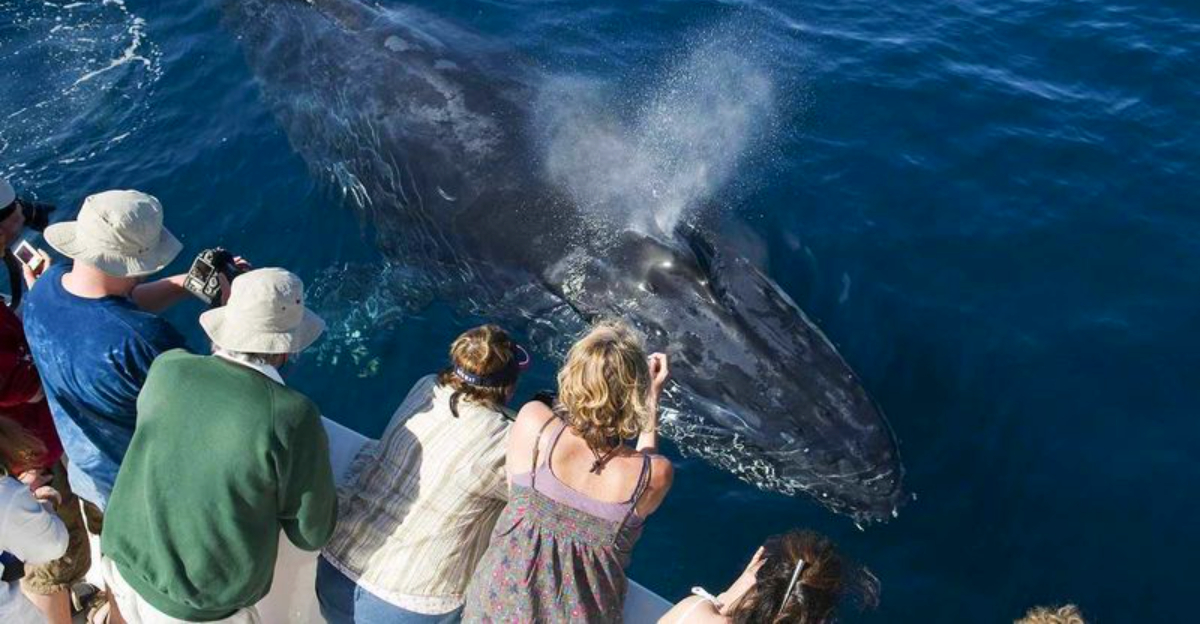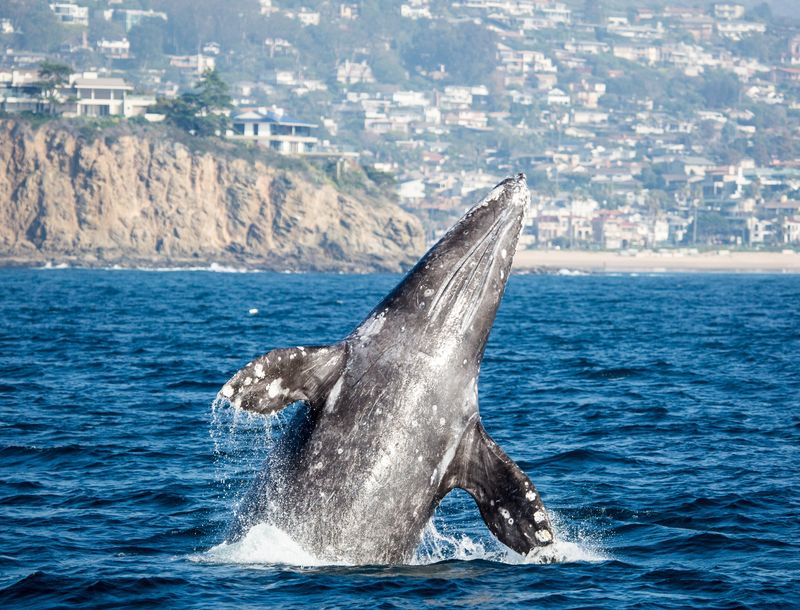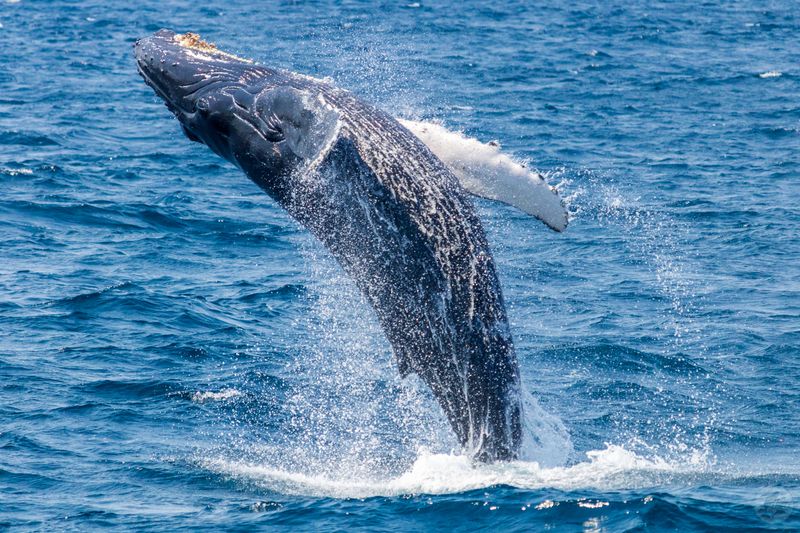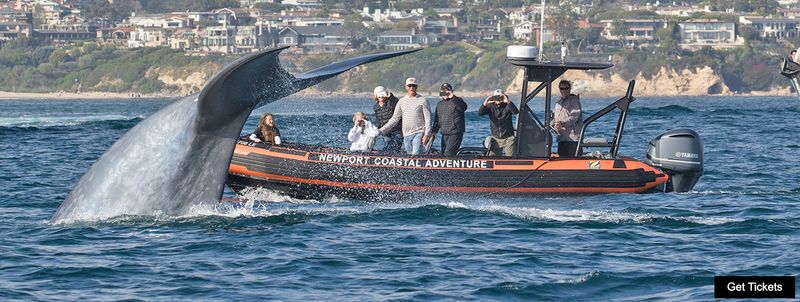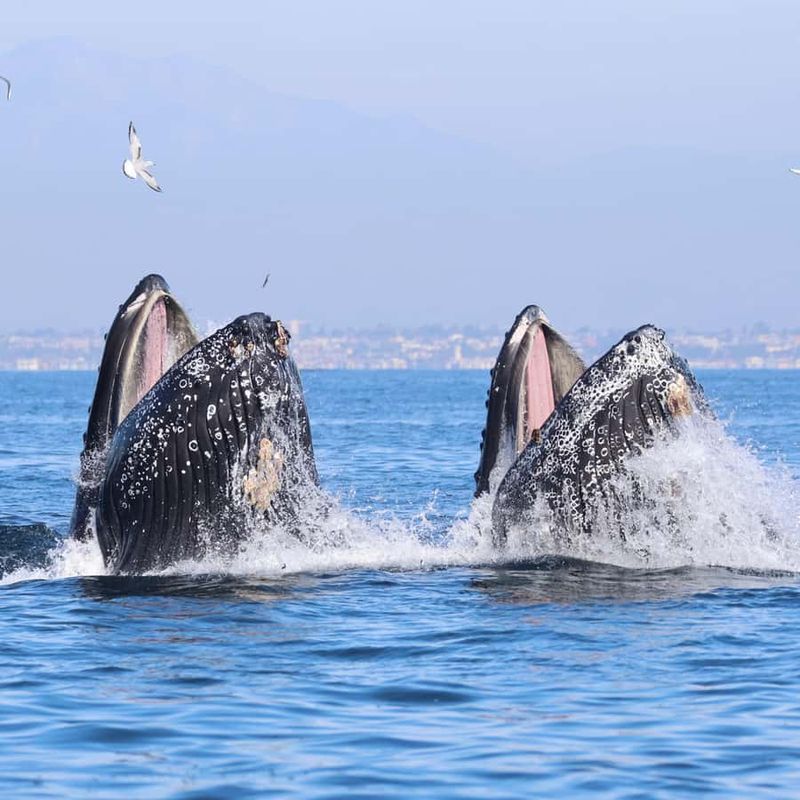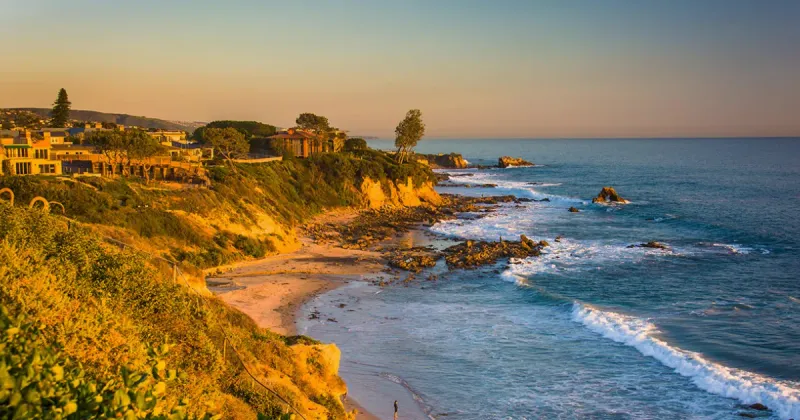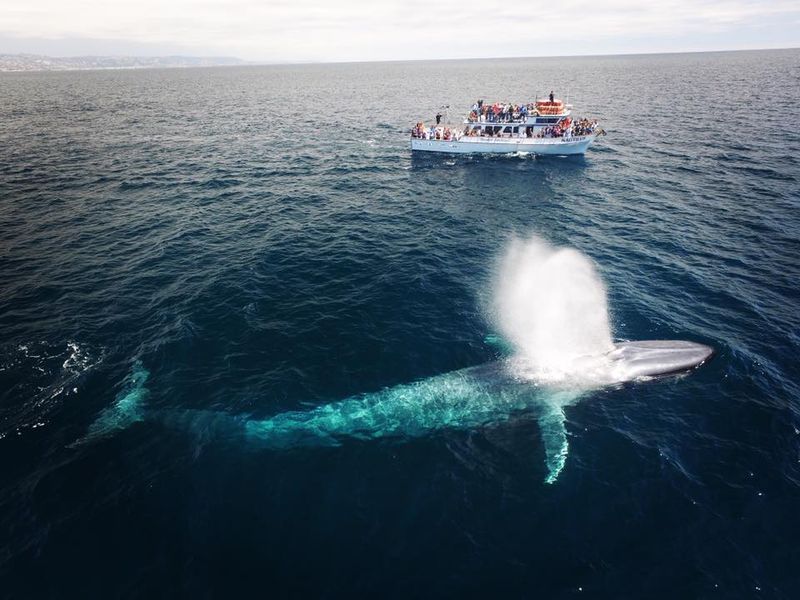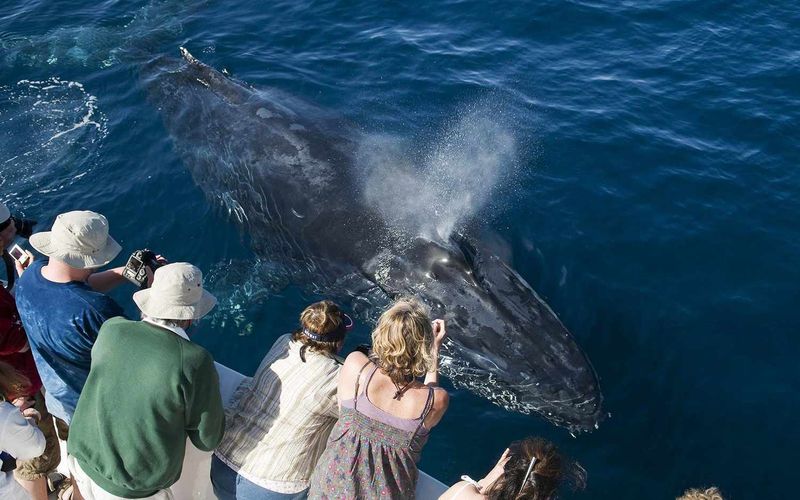Newport Beach offers some of the most exciting whale-watching opportunities on the entire West Coast. Located along California’s Orange County shoreline, this coastal gem sits directly on a major whale migration path, making it easy to spot these incredible ocean giants without traveling far from land. Whether you’re a first-time visitor or a seasoned marine enthusiast, these seven tips will help you make the most of your whale-watching adventure.
1. It Sits Right on a Prime Whale Migration Route
Newport Beach lies along the Orange County coastline, directly in the path of one of the most active whale migration routes in the world. Gray whales pass close to shore from December through April as they migrate between Alaska and Baja California.
During summer and fall, specifically May through November, blue whales, fin whales, and minke whales often feed in the nutrient-rich waters offshore. This means that no matter when you visit, there’s a good chance to see whales in their natural habitat right from Newport’s shores.
2. You Can See Multiple Species — Not Just One
Newport Beach isn’t just for gray whales. Over the course of the year, visitors regularly spot blue whales, which are the largest animals on Earth, along with fin whales and minke whales. Humpback whales, known for their acrobatics, are also frequent visitors.
Even the occasional orca sighting happens in these waters. On top of that, pods of dolphins, sea lions, and sea birds are almost guaranteed companions on these tours, making every trip a rich wildlife experience you won’t forget soon.
3. Year-Round Whale Watching Tours
Newport Beach is home to several professional whale-watching operators such as Newport Landing, Davey’s Locker, and Newport Coastal Adventure. Tours run daily all year long, adjusting routes to target species active in each season.
Most tours last two to two and a half hours, perfect for a short trip. Guides and marine naturalists are usually on board, providing expert commentary about whale behavior and conservation, which makes the experience both fun and educational for everyone involved.
4. Close Proximity to Shore Means Quick Viewing
Unlike some coastal destinations that require long boat rides, whales in Newport Beach often swim surprisingly close to the shore. Many sightings occur within minutes of leaving Newport Harbor. This makes trips shorter, smoother, and ideal for families or those prone to seasickness.
Even if you stay on land, you can sometimes spot whales from Balboa Pier, Corona del Mar State Beach, or Crystal Cove State Park, giving landlubbers a chance to witness these magnificent creatures without boarding a boat.
5. The Scenery Makes the Trip Even Better
The coastal backdrop adds to the magic—think golden beaches, sea cliffs, and the scenic Balboa Peninsula stretching along the horizon. Most tours cruise past Newport and Laguna Beach coastlines, offering breathtaking ocean views that complement the whale sightings perfectly.
After the tour, you can enjoy seaside dining, shopping, or simply stroll along the harbor. The combination of wildlife encounters and stunning California scenery creates memories that last well beyond the boat ride itself, making it a complete experience.
6. Perfect for Beginners and Enthusiasts Alike
Whether it’s your first time or your hundredth, Newport Beach caters to every type of visitor. Family-friendly options include larger vessels with comfortable seating, while adventure tours offer small, fast Zodiac boats for closer encounters.
Luxury experiences like private charters and sunset whale-watching cruises are also available. There’s a style and pace for everyone—from casual tourists to serious photographers looking to capture that perfect shot of a breaching whale against the California sunset backdrop.
7. The Best Time to Go — and What to Expect
Whales are wild animals, so sightings can’t be guaranteed, but the odds are high. Winter to early spring, specifically December through April, is peak season for gray whales migrating south toward warmer waters.
Late spring to fall, from May through November, is the best time to see blue whales, fin whales, and humpbacks feeding offshore. Year-round, dolphins and sea lions are abundant no matter the month. Tours often share recent sighting reports online so you can check which species are active before booking.
